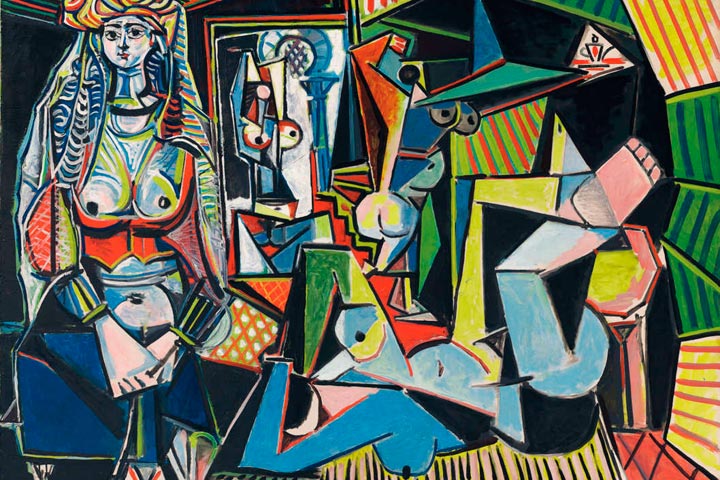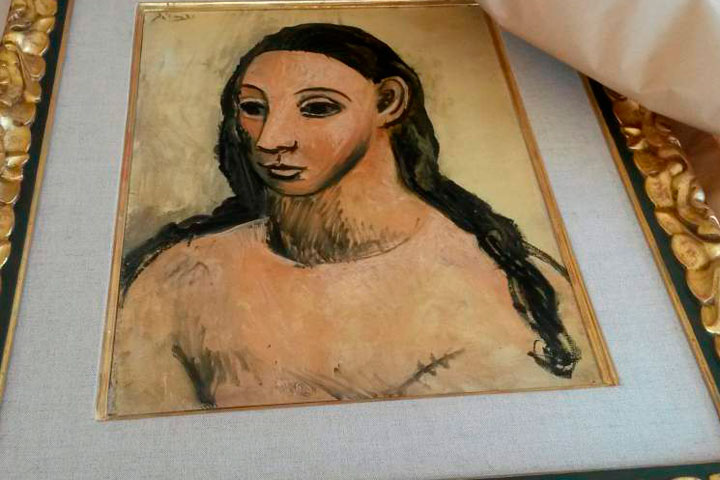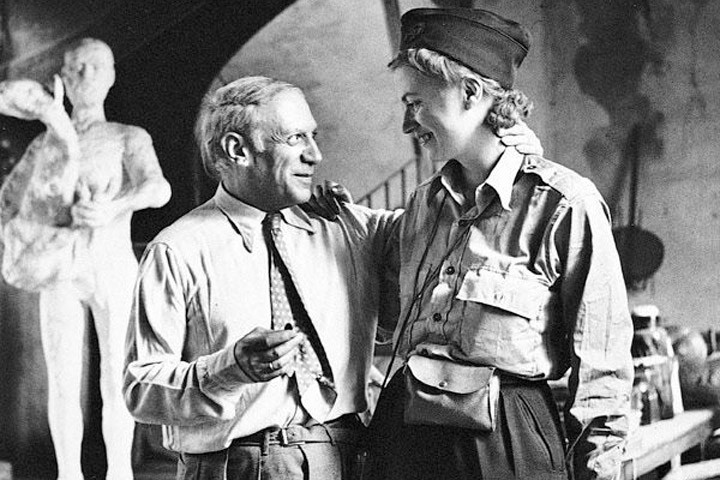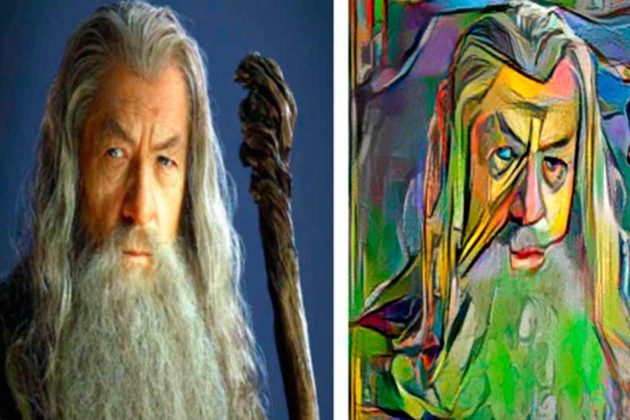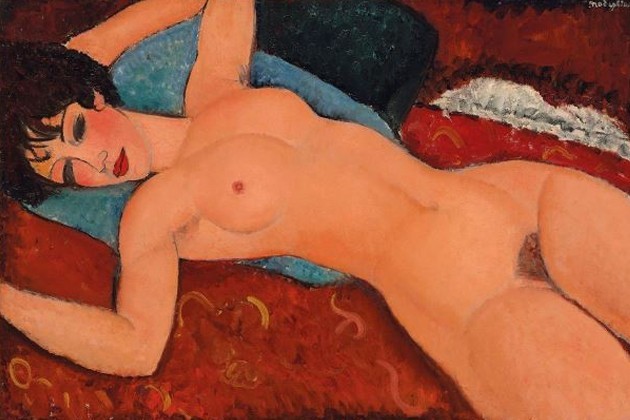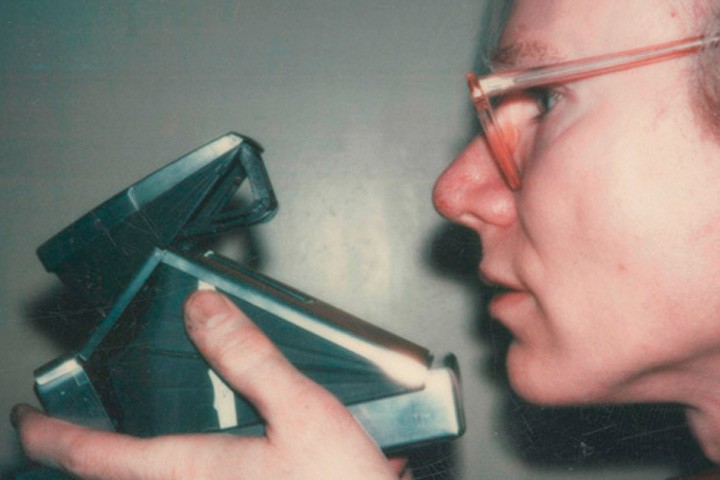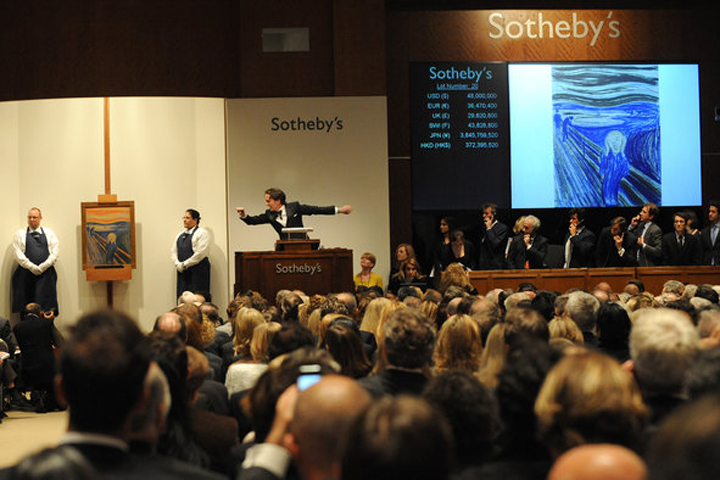Seated Woman by Pablo Picasso
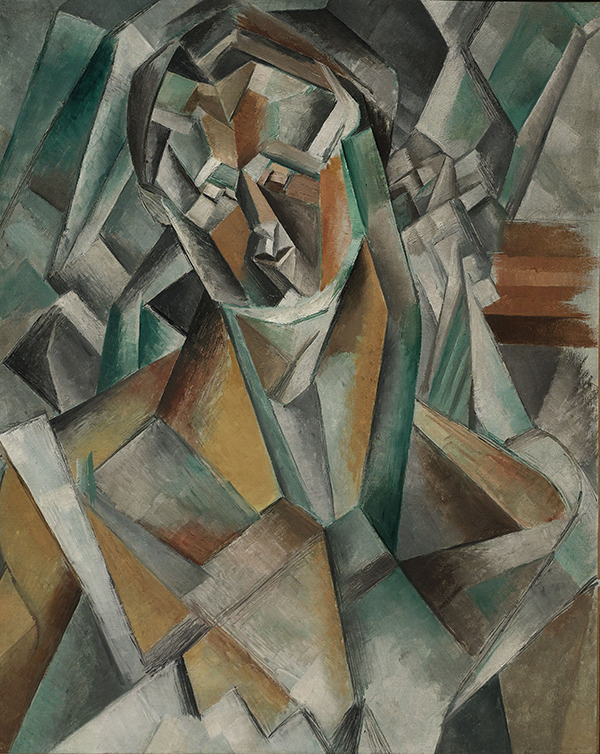

Poet, photographer. Born in Moscow, lives and works in New York City.
The Line
A line is an interesting thing — it joins and divides at the same time.
In Picasso’s early works (already in the Blue period, but even more so in the Rose period), it is easy to notice that the figure and everything that surrounds it look like they were made from the same material. The material is shadow in the Blue period and haze in the Rose period. The line merely defines the borders: separates what lies inside the body from what lies outside it. By the Rose period, Picasso’s whole world was contours. It was completely harmonized.
And then the line changed. After The Young Ladies of Avignon, Picasso depicted the world composed first from large, and then from smaller and smaller fragments. In about ten years, he came back to the line, but it was already the line that went through fragmentation.
Seated Woman is a painting made from middle-sized fragments.
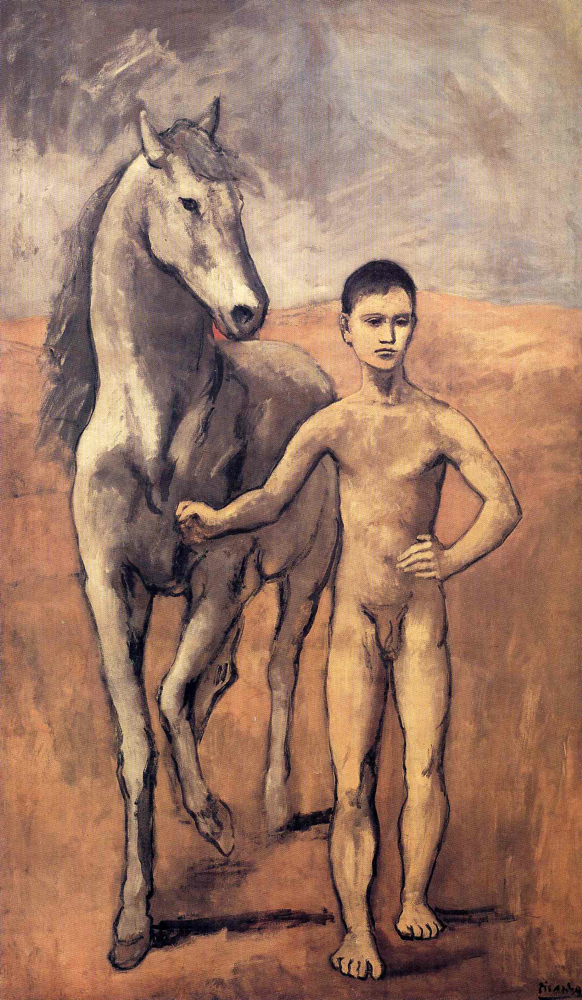
Canvas
The painting depicts a woman in a white dress. She is sitting with her eyes down, her head slightly tilted. Her small face contrasts with her larger frame. It seems like there is a vase with flowers on the side, and possibly a window.
The work is done in a mix of orange and green tones, contained in small angular shapes separated from each other. It is as if the painter was circling around the model and depicting each curve of her body not from one, but from several points of view at the same time. She is both flat and has volume. There is no formal connection between her collarbone, a piece of her dress, a wall, and a vase, there is no message, they are isolated and self-contained. The only thing that unites them is that they happen to be side by side, in the same place at the same time. All of this gathers together not because it’s together by default: by default all of it is separated. It is us who gather it together in our brains, us who look at this painting and know that it is a woman and her eyes are closed.
Details
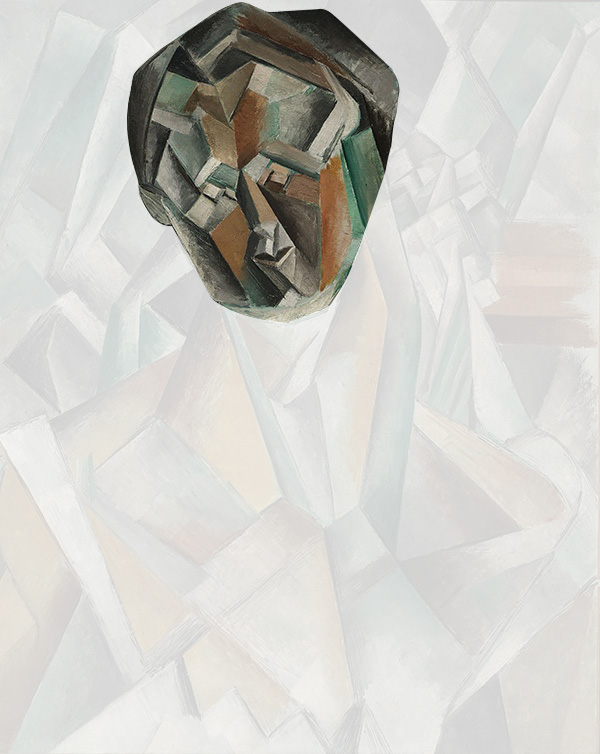
A woman is sitting with her eyes down, her head slightly tilted.
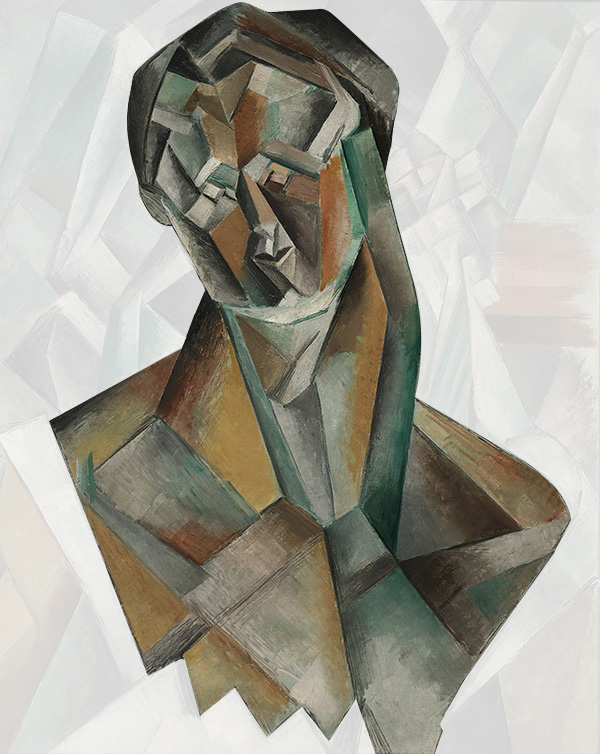
A calm small face that contrasts with a larger frame.
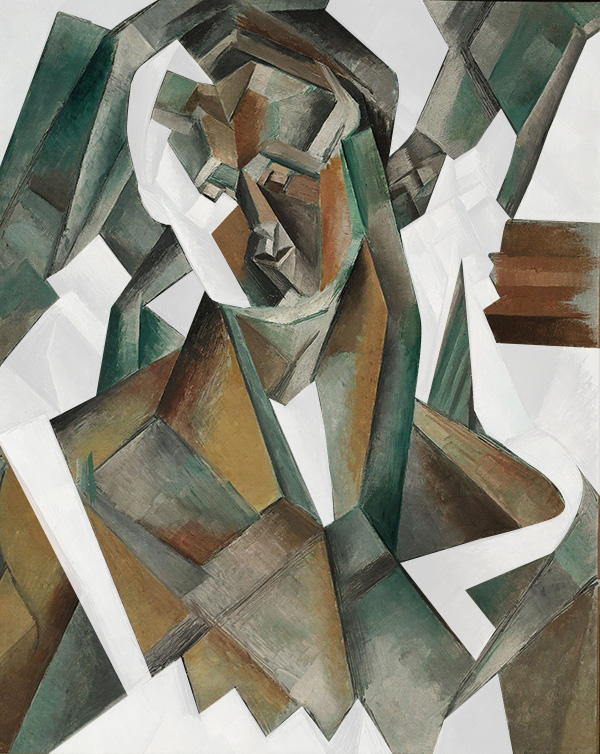
The work is done in a mix of orange and green tones, contained in small angular shapes separated from each other.
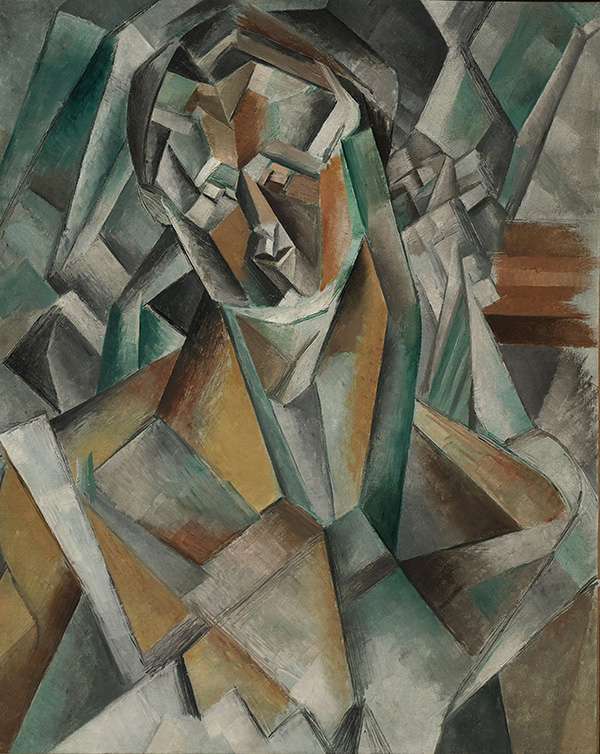
The viewers put separate details together in their brain, and that is how they know they see a woman in front of them.
Background
The most expensive Cubist painting
Seated Woman was sold at Sotheby’s auction in London on June 22 for a record $63.4 million. The painting became the most expensive Cubist work that has ever been auctioned.
This work belongs to the short period in 1909 when Picasso came back to Spain and spent a summer in a small remote village of Horta de Ebro in the very south of Catalonia. He was there together with Fernande, a famous Paris model and his friend. Seated Woman depicts her. It is not her only portrait by Picasso — he composed over 60.
In 1909, Picasso was a little younger than 30, and at the time he wasn’t yet quite sure what he was doing. Cubism existed, but it wasn’t very defined. When Picasso lived in Catalonia, he exchanged many letters with his friend Georges Braque, who at the time resided in a village in France. Both of them were looking for new forms, new ways of expression, and kept exchanging ideas.
Braque painted landscapes, Picasso painted landscapes and Fernande. If you compare the paintings from that summer, it is hard not to notice that the landscapes and portraits were painted in a similar way: the alternation of shapes in the portrait resembles the alternation of the roofs. This is very different from how Picasso depicted faces and bodies before that: it used to be mostly truncated circles, and then the shapes became more angular, with rare arches. Just like the houses in Horta de Ebro.
In September, Picasso and Fernande went back to Paris, where the painter encountered his first real success. In a year, a new period started, with even more flattened and more fragmented paintings, and the almost insurmountable distance between the painting and the depicted object. Instead of sculptural linked forms, the painting was now composed of open mutually penetrating angles and segments.
In another year, Picasso and Fernande broke up.
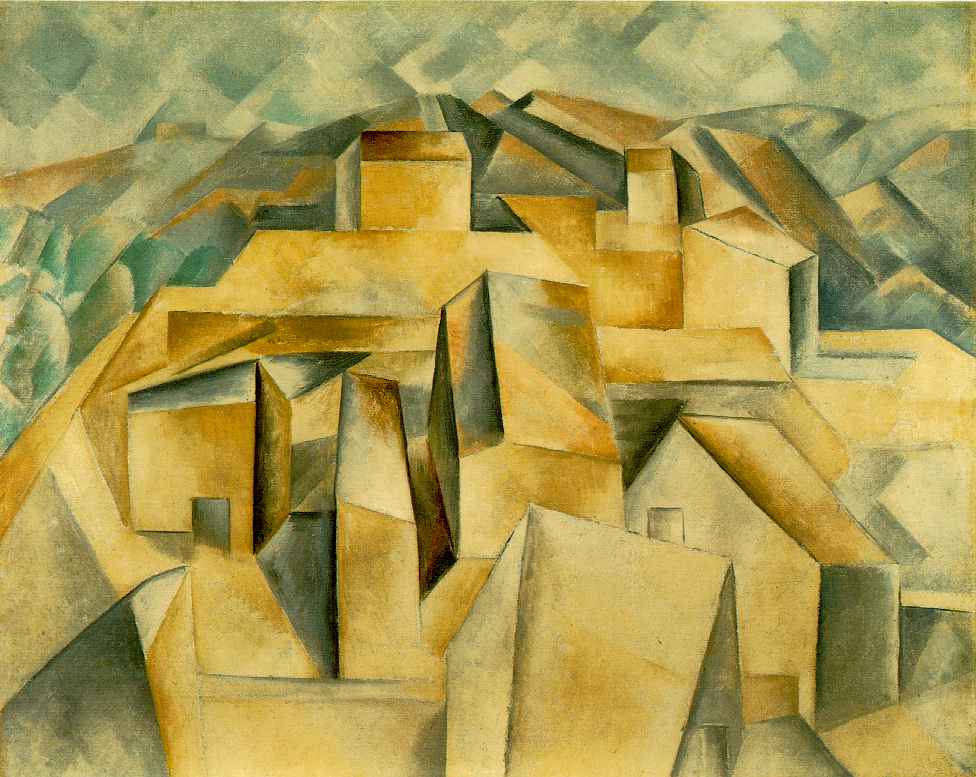
Timing
Not all paintings remain in history because they are especially important or for their broadness of statement. Some of them remain, because they are strikingly trivial, and this triviality illustrates the ideas important to the author of the idea in a certain period of his life. These are works that go on throughout the whole creative life of the author. They remain in the shadow for a long time, paving ground to monumental things. Their time comes later, if ever.
Currently, almost all really good works of Picasso belong to museum collections, and only a small portion of them are owned by private collectors. Seated Woman, which the previous owner has had since 1974, is one of them. 40 years later it was auctioned in London again.
In 40 years the world has changed: computers were invented and smallpox was eradicated, the USSR collapsed, the European Union was established, the Internet came into being and the skyscrapers fell, dozens of wars have started and ended. In Picasso’s native country, Franco’s regime fell and was replaced with a constitutional monarchy.
The village where Picasso and Fernande spent their summer is now called Horta de Sant Joan. It still has orange and green colors.
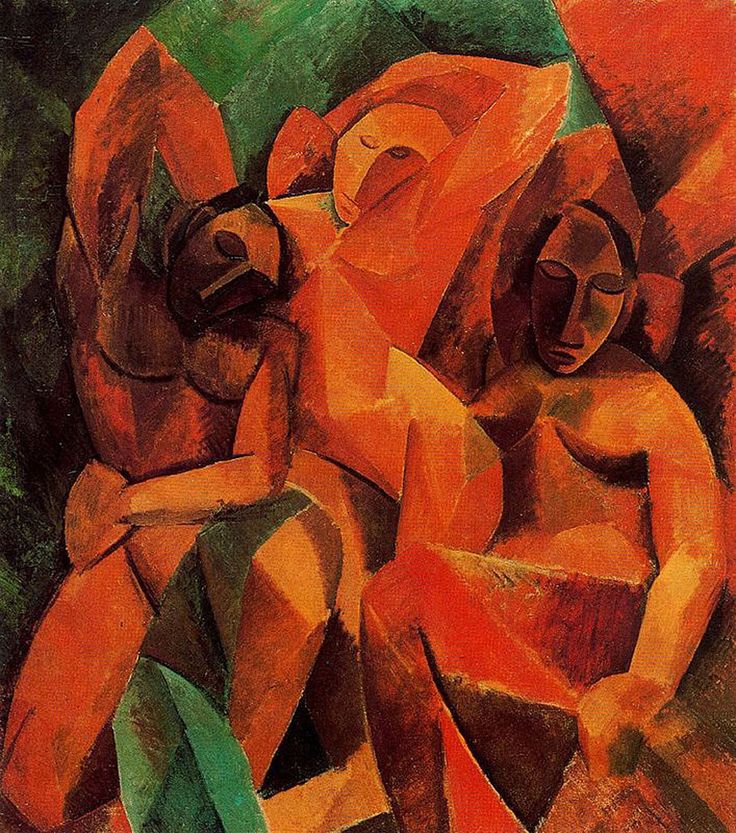
translated by Tetiana Vodianytska.
New and best
